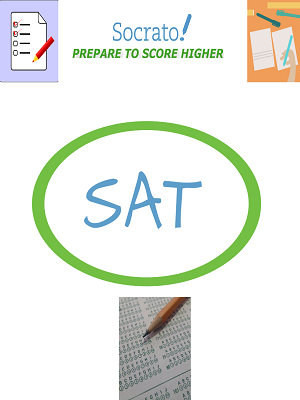SAT Overview
Numerous colleges and universities consider the SAT exam when admitting students. It is a standardized test administered in high school. Students can sit for the SAT in any high school grade from 9th – to 12th. However, most students take it in junior year. Juniors usually take the test in the spring. Since high school junior and senior years are busy it’s challenging for students to keep up with all the activities.
Academic excellence, intelligence, or aptitude are not measured by the SAT. It only covers topics that are covered in high school Math and English. The SAT is a standardized test that assesses a student’s skills in four core areas: Reading, Writing & Language, Math, and Essay (optional).
With all the extracurricular activities, they have to prepare for SAT exam too. Preparing an effective study plan is key. Students can find out when to take the test, what their expected score will be, and how many hours they need to put into test preparation. Here we will show you how to prepare an effective study plan for the SAT.
SAT Exam Details
How to Study for the SAT in 1 Month
Before you actually start, you’ll want to get organized. With just one month until your SAT test date, create a study calendar. You should be realistic when planning your studying, taking into account all of your other obligations, including homework, extracurricular activities, travel time, etc.
The SAT is about taking practice tests to hone your performance as well as learning stress strategies and lots of fundamentals, from math to reading. With that in mind, we’ve devised an SAT Study Schedule that will help you not only become a better test taker but also develop strong skills in reading, English, and math.
Creating a calendar helps to break the test prep into more manageable chunks so it feels less overwhelming. It also means you won’t waste any time wondering what to study that day. A quick glance at your calendar and you can dive right into what’s scheduled for the day.
Smart Strategy for SAT preparation
- Decide the target score goal.
- Take the practice test.
- Find the difference between the Test score and the Targeted score.
- Analyze the practice test.
- Identify the strengths and areas of improvement subject-wise and topic-wise.
- Prepare first high-priority subjects and topics.
- Take practice individual subject tests to check the improvement.
- Take the full-length test before the actual test.
Is a Practice Test Needed for SAT preparation?
- Taking practice tests isn’t just good for getting familiar with the SAT format and sections-it’s also great for learning from your mistakes.
- Study both the questions you got wrong and the questions you got right after every practice SAT.
- Practice tests help you learn what each test asks, how to structure them, the time limit, and more.
- To ensure you’re taking these practice tests correctly, ensure you follow the directions that come with them.
- SAT Practice Test is very important for the student and academy owners to get insight into tests and their strengths, and weaknesses in each subject. Moreover, we track the progress and put focus on the right topics.
- Prepare the right topic so the preparation is easy and efficient which gives better results in less time. The practice test can help you understand exactly what each test is asking, how they’re made, the time limits, and more.
Smart Strategy for SAT preparation downloads a free SAT e-Book. Grade your SAT practice test bubble sheet online to get a detailed Socrato diagnostic report.











